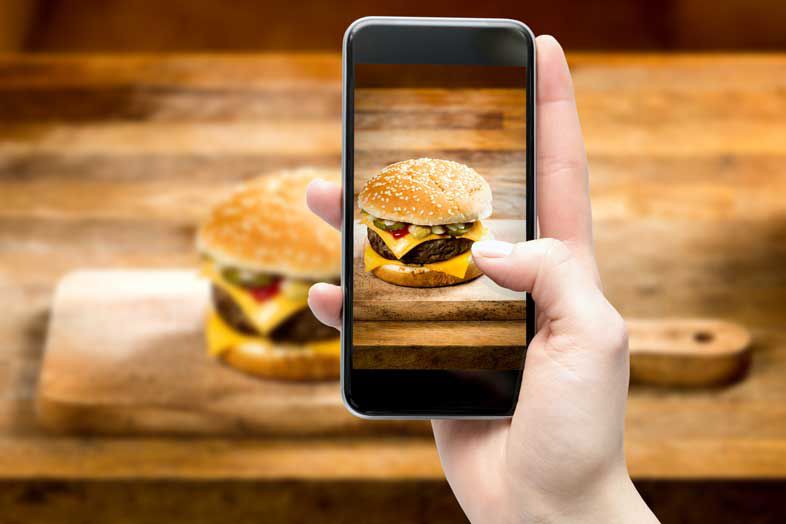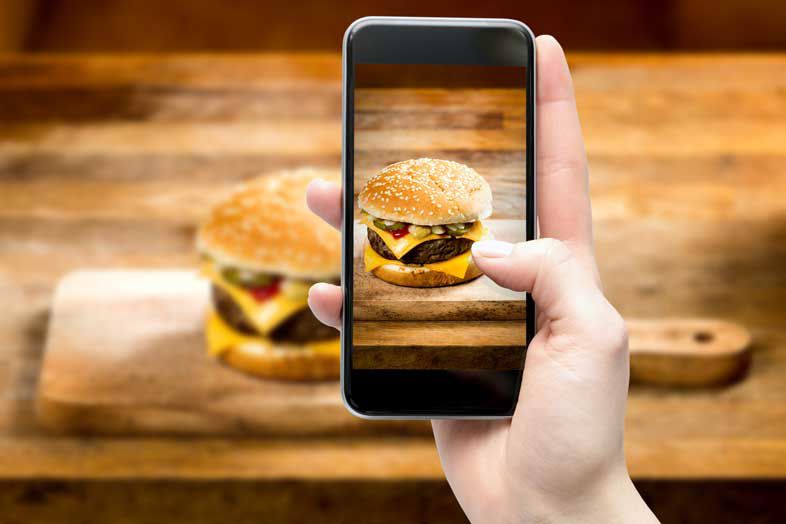The flatbread tasted like the first half of its name. Not awful. Just flat. This was four years ago in Encinitas. As prescribed by my profession, I’d taken a photo of the flatbread in all its food-porn glory. The light was soft, natural, streaming through a window from that expensive San Diego sun, which is better than any professional photography rig. The photo was the food’s big lie. It looked desirable. It tasted like a shrug made with cheap ingredients, which have higher profit for the owner.
I had just returned from a meeting with a man whom I’d paid to help me with my career as a food writer and food-TV person. In his nice suit and great hair in a conference room the size of my whole apartment, he’d told me in front of six of his assistants, “Take a photo of every damn thing you eat! Everything! Post it!”
With his words in my head, I posted a photo of the flat flatbread to Instagram. I didn’t rave about it. I merely presented it with a list of the ingredients, and didn’t make a comment on whether it was good or bad or in between.
The photo rang up likes and hearts. It gained me a few followers. “I need that in my life,” said one commenter. “OMG AMAZING!” said another. I felt like a fraud. Part of my job is to tell the stories of the people, history, science, culture, ecology, and ideas of food. My other task is to find some truly inspiring dishes, great dishes, and help people find them. To create a map of sorts to foods and drinks I think will really knock people’s socks off, or at least make them not regret the purchasing decisions they’ve made with their hard-earned money.
Then, one commenter got real: “I thought you had better taste than this,” she wrote. “I’ve had that flatbread.”
It was a crusher. Although I hadn’t written an endorsement of the dish, just posting a beautiful photo of it was seen as an endorsement. She’d sniffed out my disingenuousness. And she was right. I deleted the photo, and decided to never again post a photo of a dish unless I really enjoyed it. Or at least to be honest in the text about whether or not it was a clunker.
This may seem trivial. But social media is not trivial. It’s making and breaking businesses. It’s our new road map to life enjoyment, and I’ve come to question its honesty, and the effects of its dishonesty. Some restaurants are making pretty food—true centerfold food—and the ingredients and cooking and flavor become secondary concerns, or not much of a thought at all. As long as the look of it has the potential to become viral. Some truly average food, made with ingredients that are cheap (because they’re not good and often actually bad for us), are being lauded as a second-coming of Food Jesus.
Meanwhile, another chef has dedicated her life to their craft, spending great money on buying the best, most ethically conscious ingredients available. But maybe her presentation is off. Maybe it doesn’t translate well on social media.
I hadn’t thought about that until recently, when a friend posted a photo of a dish and hadn’t said in his post whether he liked it or not. I asked him if he did. “Not really, but I take a photo of everything I eat for my Instagram account.”
He was me, that day four years ago.
It got me wondering about the realness of social media. Are we really enjoying that food, or is it more important that we present the idea that we love it—that we’re enjoying the hell out of our lives? Presenting that food as damn amazing, by proxy, gives our lives a little more PR shine.
Obviously, in the case of my friend—and me, that one day—at least part of the social media endorsement world is a total fraud. In order for “users” to make social media brands for themselves as travelers or fashion mavens or food lovers or art appreciators, they have to find great things. And life is busy. We only have so much time to hunt for this stuff. So if a user makes a drive and spends money on something and it disappointed them, there is a temptation to hide that fact, because they simply need the fodder for the ’gram. People want to be the finder of many, many great things.
This isn’t a phenomenon unique to social media, of course. I’m sure millions of people have stood in front of the Statue of Liberty and said, “Oh, neat, but I dunno.” What is unique to social media is how fast something becomes viral, becomes a must-try for cultural literacy. The hype quickly becomes the entire point, and the true merit of something becomes an afterthought, or not a thought at all.
So, that’s the day I stopped being disingenuous on social media. I have fewer things to post, and that feels right.

PARTNER CONTENT
I Don’t Believe You Like That Burger















